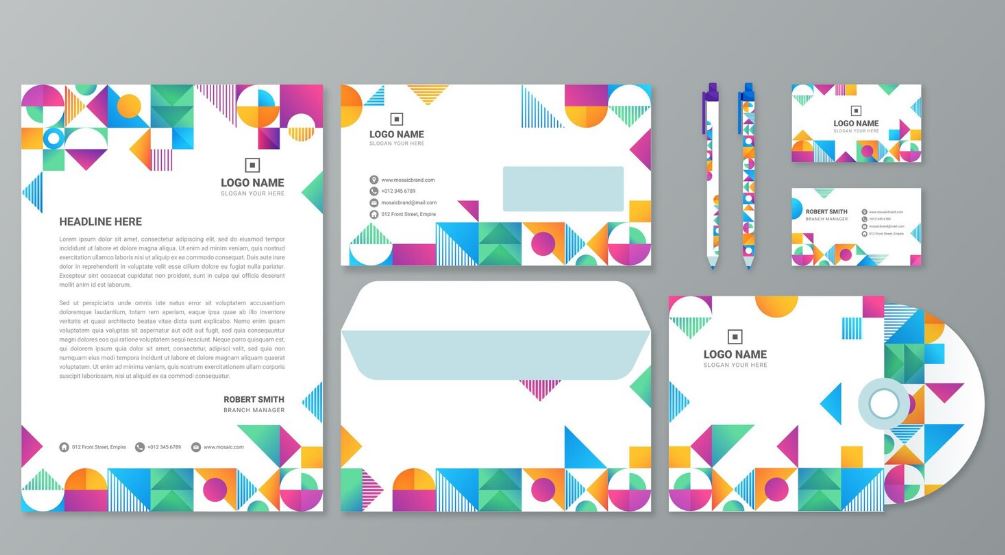Learn how to print an envelope in Google Docs using simple steps, smart formatting, and a printer setup that actually works.
To print an envelope in Google Docs, open a blank document, set a custom page size (like 4.125″ x 9.5″), add address text boxes, and print with the correct orientation. This simple technique is just one of many small business marketing tools that can help streamline your communication and branding efforts.
I’ll admit it; the first time I tried to print an envelope from Google Docs, I thought it would be a quick, two-minute job. It wasn’t. My printer jammed, flipped the envelope the wrong way, and then printed the return address upside down.
That’s when I realized something slightly tragic yet oddly funny: Google Docs and real-world printing live in different universes.
If you’ve ever stood by your printer clutching an envelope like a confused magician, this guide is for you. Together, we’ll figure out how to print an envelope in Google Docs; step by step; without losing your patience, paper, or sanity.
Article Breakdown
Step 1: Open a Blank Document and Prepare for Layout
Start fresh. Go to Google Docs and click Blank Document.
Think of this as your digital workspace; except instead of writing an essay, you’re designing a mini canvas that happens to carry a physical letter.
If you often send letters, invoices, or holiday mail, consider saving your finished layout as a template so you never have to start from scratch again.
Step 2: Set a Custom Page Size for Your Envelope
Here’s the first major step; your page must match your envelope’s dimensions exactly.
Google Docs defaults to the U.S. letter size (8.5 x 11 inches). But envelopes are smaller and come in multiple sizes.
To change it:
- Go to File → Page setup.
- Click Paper size → Custom size.
- Enter your envelope’s measurements.
Common envelope sizes:
- No. 10: 4.125″ x 9.5″ (standard business envelope)
- A2: 4.375″ x 5.75″ (invitation or note card)
- A7: 5.25″ x 7.25″ (greeting card)
Once entered, hit OK.
Why it matters: If your page doesn’t match your envelope, your text will misalign, cut off, or float awkwardly off-center when printed.
Step 3: Add Addresses; The Core of the Envelope
This is where function meets finesse.
Recipient Address
- Move your cursor to roughly the center of the page.
- Type the recipient’s name and address.
- Use the Enter and Tab keys for manual placement or use a text box for precise alignment.
Return Address
- Move to the top-left corner.
- Type your return address in smaller font (around size 10–11).
A clean example layout:
(Top-left corner)
Jane Doe
1234 Oak Avenue
Austin, TX 78701
(Centered)
Mr. John Smith
5678 Elm Street
Chicago, IL 60614
Formatting tips:
- Keep fonts simple and legible; Arial, Times New Roman, or Calibri work best.
- Avoid decorative or cursive fonts. Postal scanners often reject them.
- Don’t bold everything. Let spacing and placement do the talking.
Step 4: Adjust Margins and Fine-Tune Placement
To make everything fit neatly:
- Go to File → Page setup → Margins.
- Reduce all margins to 0.25 inches or lower (depending on your printer).
Then preview your layout with File → Print → See preview.
If text seems off-center, make small manual adjustments until it feels balanced.
A good envelope layout should look visually calm; not crowded, not too sparse.
Step 5: Time to Print; The Moment of Truth
Now comes the practical test: the printer.
Every printer feeds envelopes differently, and this is where most people get tripped up.
Follow this checklist carefully:
| Step | What to Do | Why It Matters |
| 1 | Place the envelope in your printer’s feed tray | Avoid jams and misalignment |
| 2 | Check your printer’s tray icon (flap up or down) | Ensures correct print orientation |
| 3 | In Docs, click File → Print | Opens print dialog |
| 4 | Under “Paper size,” select your custom envelope size | Matches layout to print |
| 5 | Choose the correct “Orientation” (Portrait or Landscape) | Prevents rotated text |
| 6 | Print one test envelope first | Saves your stationery |
Pro tip: Some printers automatically revert to “Letter size.” Always double-check that your custom envelope dimensions are selected before clicking “Print.”
Step 6: Troubleshooting Common Problems
Even with perfect setup, things can go sideways. Here’s how to fix the most common issues:
Problem 1: Text prints off-center
- Double-check custom size in both Google Docs and printer settings.
- Re-align text boxes slightly left or right.
Problem 2: Envelope feeds incorrectly
- Flip it 180 degrees and try again.
- Some printers require the flap to face upward; others face down.
Problem 3: Ink smudges or uneven print
- Use matte envelopes (avoid glossy surfaces).
- Let the ink dry for 30 seconds before handling.
Problem 4: Printer ignores envelope size
- Open printer Properties → Advanced Settings.
- Manually select your envelope dimensions there too.
Remember: Google Docs doesn’t “know” what’s inside your printer. You have to tell your printer what’s coming its way.
Step 7: Automate with Google Docs Add-ons
If manual setup sounds too tedious, Google Docs has add-ons that can do the heavy lifting.
To find one:
- Go to Extensions → Add-ons → Get add-ons.
- Search for Envelopes.
- Choose one (like “Envelopes by Labelmaker” or “Foxy Labels”).
- Follow the on-screen steps to generate and print your envelope layout.
These tools automatically set page dimensions, align addresses, and let you save reusable templates.
Add-ons often request permission to access your Docs. If you prefer privacy, manual formatting (like we did above) is still the safest route.
Step 8: Make Your Envelope Look Professional
This step is optional; but it’s what separates a regular envelope from one that leaves an impression.
Try these subtle enhancements:
- Add your company logo at the top-left corner.
- Use bold for the recipient’s name to guide the eye.
- Align everything symmetrically for a polished aesthetic.
- Use monospaced fonts (like Courier) for a classic “typewriter” feel.
An envelope’s design sets the tone before the recipient even opens it. Whether it’s a job application, wedding invitation, or business proposal; presentation speaks volumes.
Comparison: Google Docs vs. Word vs. Canva
| Feature | Google Docs | Microsoft Word | Canva |
| Envelope Templates | Manual or Add-on | Built-in | Custom design templates |
| Ease of Setup | Moderate | Very Easy | Very Easy |
| Print Control | Requires tweaking | Automatic | Limited |
| Visual Design | Basic | Professional | Creative |
| Ideal For | Everyday users | Office professionals | Designers and artists |
- Google Docs: Perfect for free, cloud-based customization.
- Word: Best for plug-and-play printing.
- Canva: Great for beautiful, visually rich envelopes.
Each tool shines in its own world; Docs is practicality, Word is precision, Canva is flair.
Learning how to print an envelope in Google Docs is like learning how to drive a stick-shift car; tricky at first, but deeply satisfying once you nail it.
Your first few tries might involve awkward stalls (or in this case, misprints), but soon you’ll know exactly which direction to feed the envelope and how to get perfect alignment every single time.
And when that crisp, perfectly printed envelope slides out, there’s a quiet thrill in realizing: you outsmarted both Google and your printer.
FAQ’s
1: Can I print directly on an envelope using Google Docs?
Yes. Set a custom page size matching your envelope, align your text, and print with the correct orientation in your printer settings.
2: Does Google Docs have a built-in envelope template?
No. You must either create one manually or use an add-on to automate layout and formatting.
3: Why is my envelope printing off-center?
Usually because the paper size in your printer doesn’t match your custom document size in Google Docs.
4: What’s the most common envelope size for business letters?
The No. 10 envelope (4.125″ x 9.5″); it fits standard 8.5×11″ letters folded in thirds.
5: Can I print on colored or textured envelopes?
Yes, as long as they’re inkjet-friendly. Avoid glossy finishes that can cause smudging.
Key Takings
- Google Docs doesn’t have a built-in envelope tool, but you can create one easily using custom page dimensions.
- Always match your document’s size to the physical envelope for proper alignment.
- Use text boxes for precise address placement.
- Double-check printer orientation and paper size settings before printing.
- Try Google Docs add-ons to simplify layout creation.
- Add logos and design elements to make your envelope stand out.
- Test print on plain paper before using real envelopes; it saves time and frustration.
- Once you’ve done it once, you can save the file as a reusable template for future mailings.
Additional Resources
- Google Docs Help: Print Layout Guide: Learn about setting margins, orientations, and custom sizes.
- USPS Envelope Size Standards: Understand official sizing for smooth delivery and sorting.



